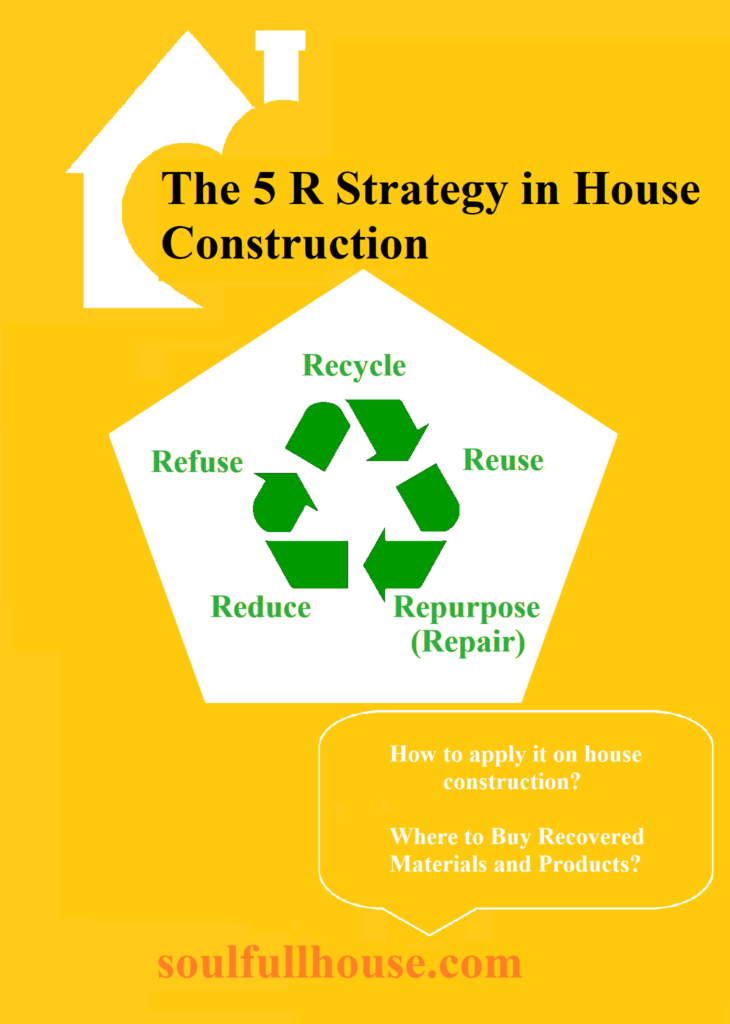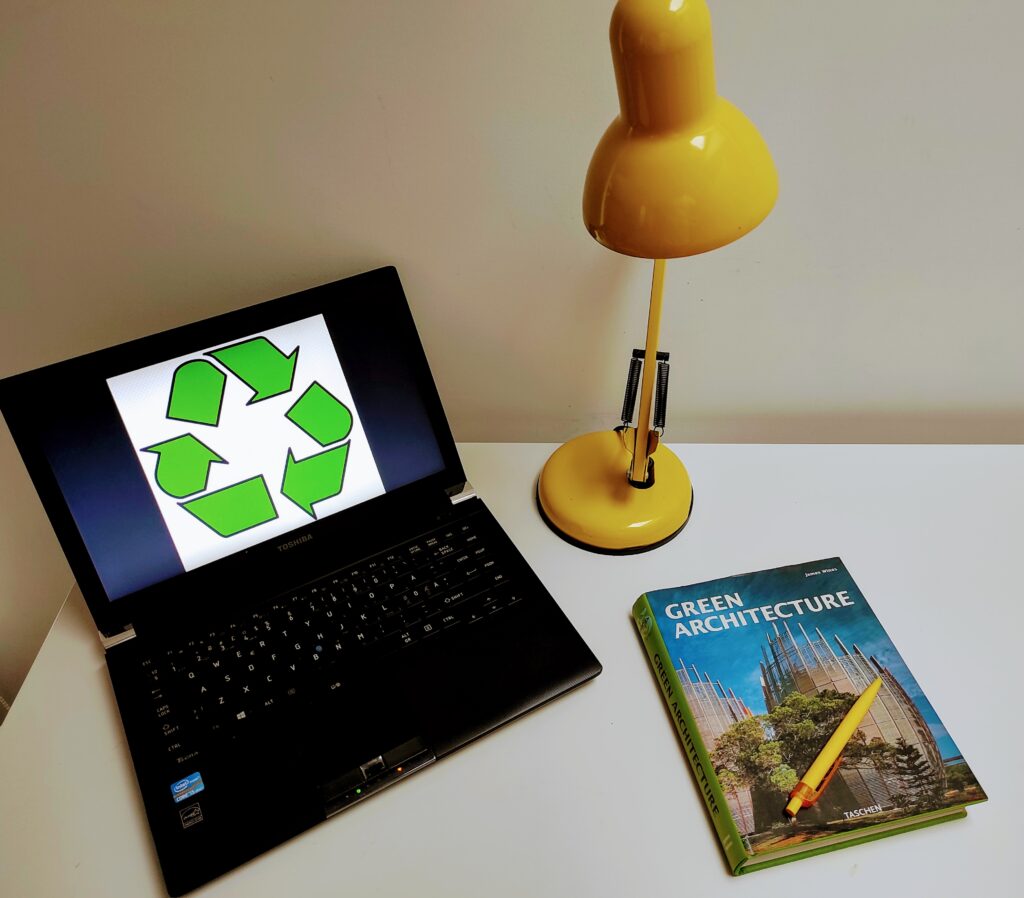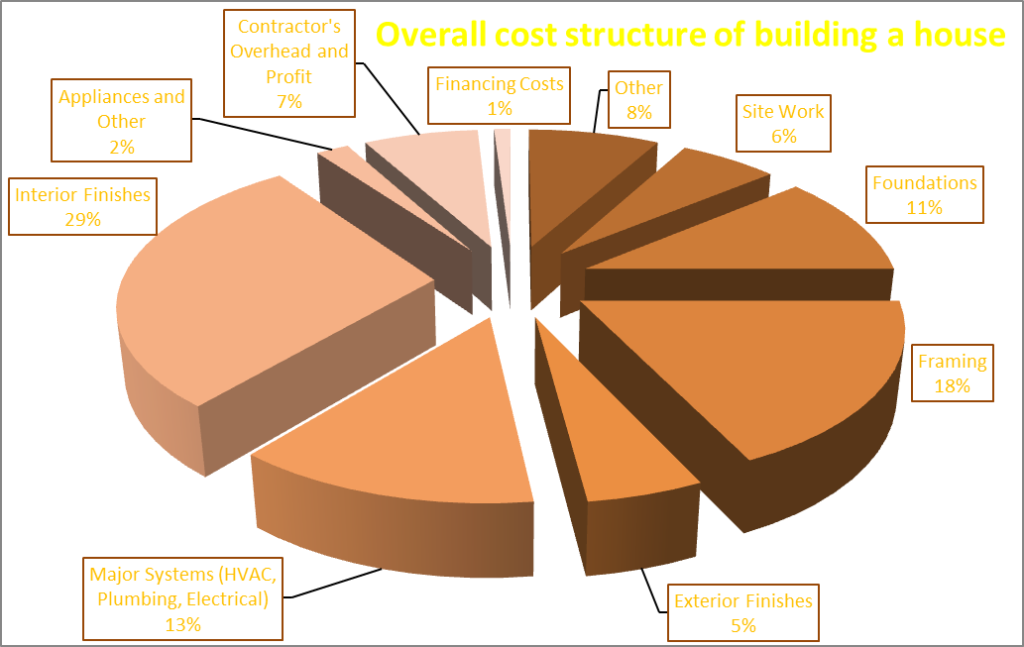People commonly believe that constructing in an environmentally friendly way will add to an already tight budget. But this doesn’t have to be the case. Applying the 5 R’s strategies to your house construction can not only positively impact the outcome of your project by significantly reducing the amount of waste generated for both long and short term, but also make you significant money savings.

What is 5Rs strategy and how to apply it on house construction?
The 5Rs stands for Refuse, Reduce, Reuse, Repurpose (Repair) and Recycle. It implies implementing eco-friendly techniques throughout the building and maintaining of a house with the objective to minimize the impact on nature on the one hand and achieving financial benefits on the other.

How to reuse and recycle building materials for home construction?
Step by step!
Refuse!
This is the first step of the 5R framework. It may take some experience to learn to refuse rubbish, but adding this step into your house construction is the most effective strategy to reduce waste. Consult your supplier about alternatives to wasteful or non-recyclable products. Refuse needless product packaging and seek reusable or returnable containers when negotiating with sellers. Making more well-informed buying choices and establishing clear standards and expectations early in the process makes it easier to “refuse” waste in the first place. This can be the most difficult to accept, especially when it contradicts attitudes we’ve developed through time. Just few seconds spent refusing a single-use disposable will make all the difference.
Proper and responsible hazardous waste processing reduces the accumulation of toxicity in the environment because many construction materials, such as lead-based paint, glues, chemical solvents, latex paint, asbestos, and so on, must be carefully treated to ensure they do not negatively impact the natural ecosystem.
Reduce!
We live in a consumerist society, and we are continually assaulted with advertising and offers designed to persuade us that we need something else… and something else… and more… Resist it! Consider how much you truly require. Begin with the space, how much space in the house your family utilizes, and what you can consider luxury and vanity. Don’t forget to apply the reduce principle to your energy and water consumption. Reduce the use of harmful, wasteful, and non-recyclable products.
Reuse!
Begin to replace disposable items with reusable ones. You’ve probably done it without even realizing it, whether it is reusing jars or buying used. Look for similar possibilities during the house-building process as well, to extend the life of items. Wood, large dimension lumber, plywood, flooring, and molding – all of these materials can be reused immediately. Use recycled bricks while building new or renovating a century-old house or repairing a wall in a barn conversion. These may be less suitable for insulation, but they will add a touch of vintage charm to any renovation job. Therefore, one reused brick at a time, you can save the Earth.
Repurpose or Repair.
Think about this: 80% of the buildings that will exist in 2050 – exist today! Try repurposing anything that cannot be refused, reduced, or reused. A few people refer to this technique as upcycling. You might be shocked to find how many ordinary products could serve multiple functions. It may require some ingenuity at times, but the possibilities are limitless. Recommend your friends and family to donate any products they no longer needs, and check with them before purchasing new materials. When a product fails to perform properly, repair it. It’s frequently easier and more convenient to simply replace a broken item, but try to find someone to repair it or learn how to repair it yourself. Hardwood pallets and reclaimed floor material, for example, can be used to make doors or tables. Be creative!
Finally, Recycle!
What you can’t refuse, reduce, reuse or repair be sure to recycle. Check with your local recycler on what can and cannot be implemented in your house construction project. Concrete can be broken down and recycled as base course for building driveways and footpaths. Untreated timber can be used. Large pieces can be re-milled and put back to use in construction. Asphalt paving is crushed and recycled back into new asphalt for paved roads. Trees and brush are recycled as compost or mulch. Metals (steel, aluminum, copper) can be melted down and reformed into new metal products…

Where to Buy Recovered Materials and Products?
Although at first glance it seems that such materials and products are hard to come by, there are actually a lot of places around us where they are offered, most often at very reasonable prices, you just have to look around:
- Online classified websites
- Decommissioned commercial buildings
- Local companies that trade building materials
- Second Hand Stores
- Thrift Shops
- Habitats
- Recycling Stores
- Junk Yards
- Neighborhood
From personal experience, I would emphasize only one thing: Safety first! Finding and employing recycled construction materials is not without risks. Keep in mind that all reclaimed materials used in structural support should always be inspected by a competent specialist to guarantee it’s safe to use. The same is true for rescued bricks, which should be tested for durability as well. When salvaged items from older buildings are suspected of containing hazardous components such as asbestos or lead, they must be examined by a certified specialist.
In the end! When you start looking for salvage items for your project, check with your local builders’ organization and your state or county environmental agency for best practices. These organizations can assist you in planning your project as well as ensuring that it complies with local government requirements. For this type of development, there are typically numerous financial subsidies available.
